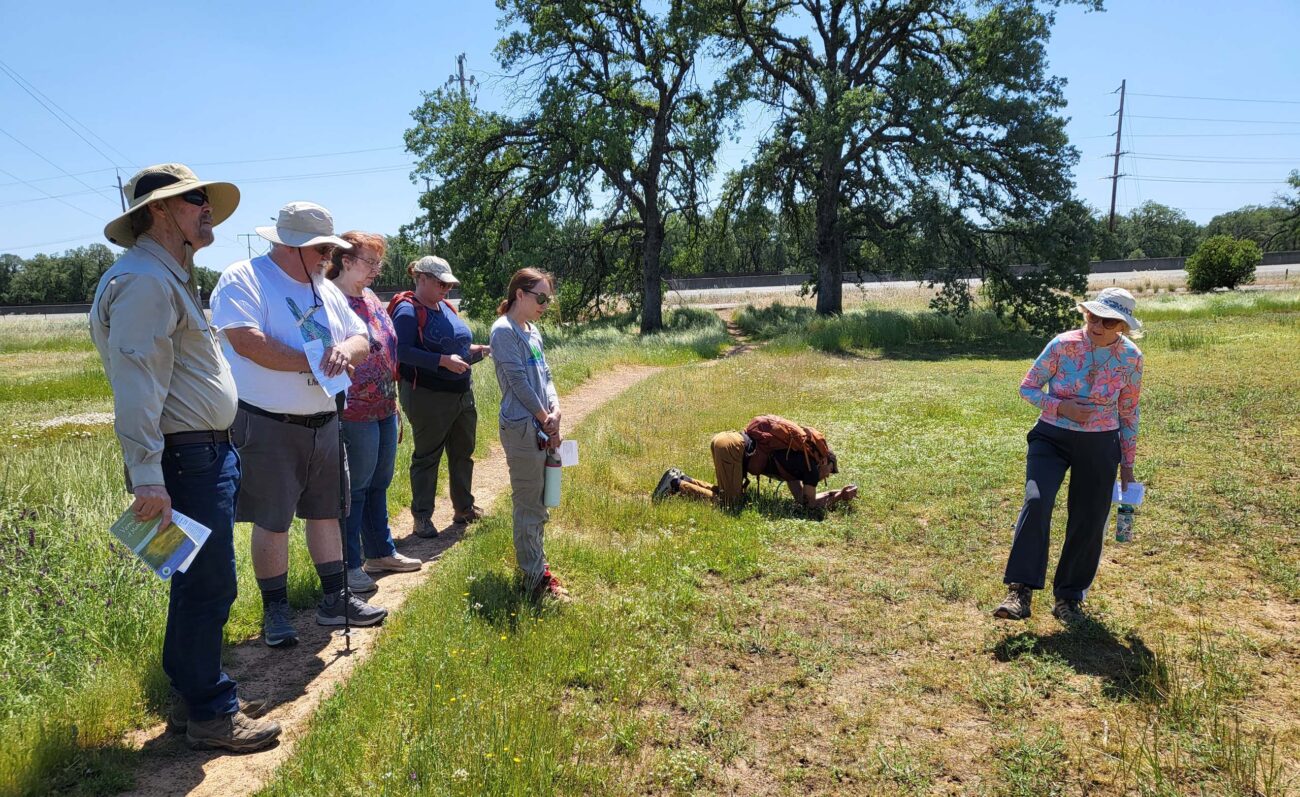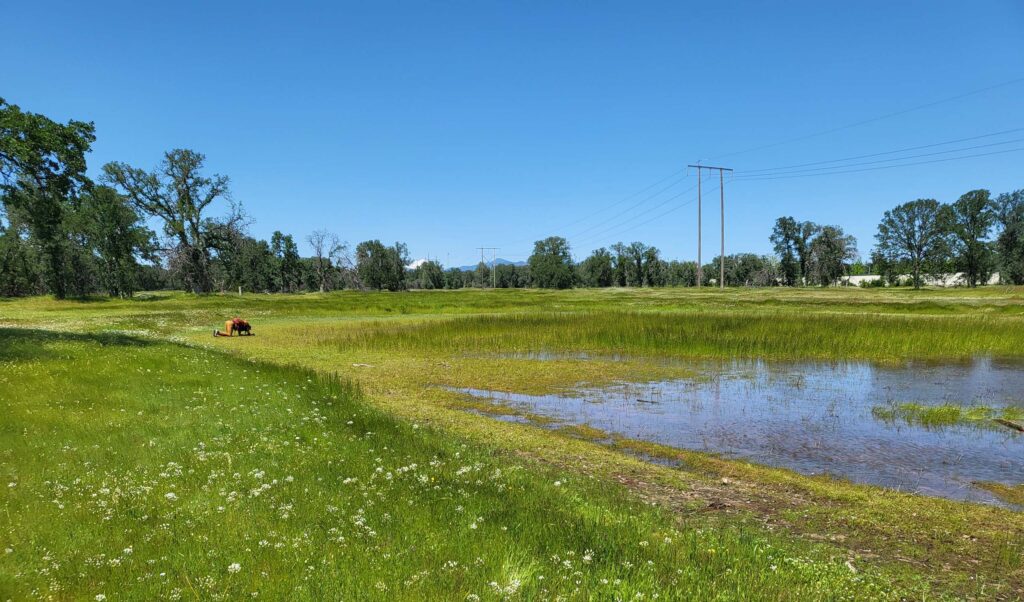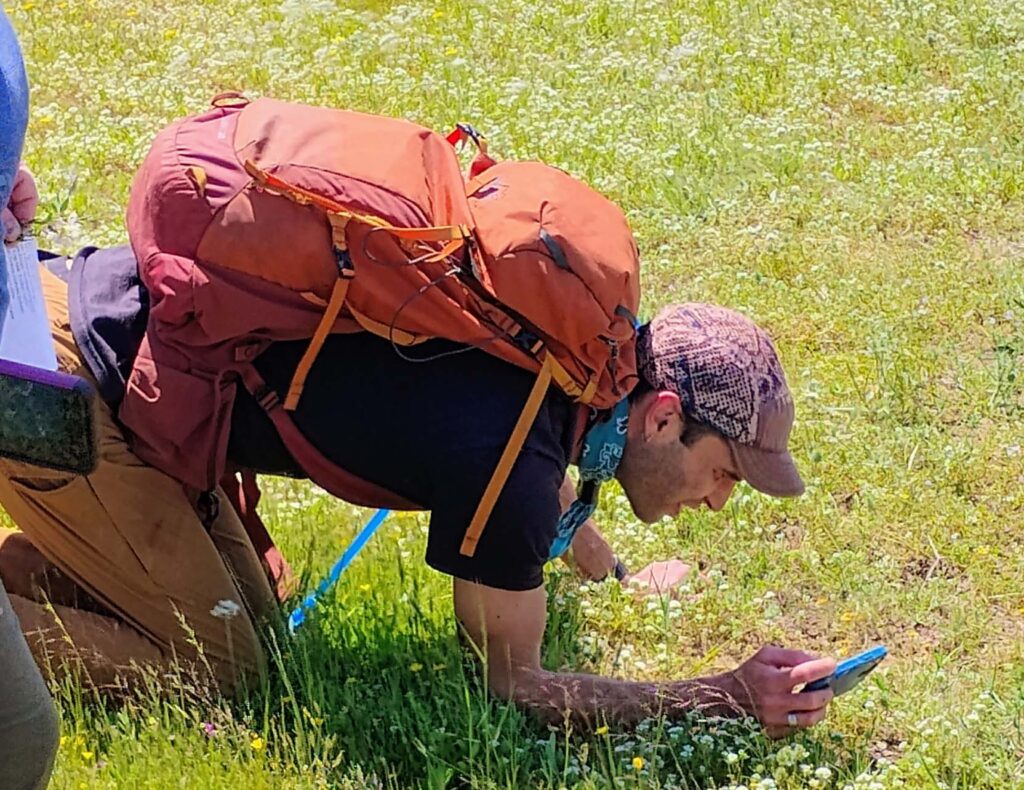
The Old Highway 44 vernal pools field trip brought out eight friendly people for a great day of wildflower viewing on a pleasant Sunday afternoon. Plenty of wildflowers were blooming. Both double-toothed and fringed downingia (Downingia bicornuta and Downingia cuspidata, respectively), Johnnytuck (AKA butter-and-eggs, Triphysaria eriantha), Fremont goldfields (Lasthenia fremontii), narrow-leaved soap plant (Chlorogalum angustifolium), sky lupine (Lupinus nanus), spokepod (Thysanocarpus radians), clasping onion (Allium amplectens), and white hyacinth (Triteleia hyacinthina) were among the most common bloomers. Great Valley coyote-thistle (Eryngium castrense) was found in all the dried-up ponds, but not yet blooming.

The group was considerably interested in the thousands of Pacific tree frogs (Pseudacris regilla) hopping around the damp areas. Looking closely, I saw one that was different—I believe it was a western spadefoot toad (Spea hammondii), an amphibian species that is similar to a small toad. It was fatter and looked different from the tree frogs.

The western spadefoot toad is only active during rains or high humidity, and at night. Late winter through the end of March is the breeding period and the spadefoot must metamorphose from a tadpole to adult in 12 to 16 days, before the pools dry up. After developing to a full-sized adult, it burrows underground as far as 36 inches, or lives in a mammal hole until the next rains, which brings it to the surface to hunt at night. The species is currently under review for listing as Threatened by the US Fish and Wildlife Service. ~David Ledger
